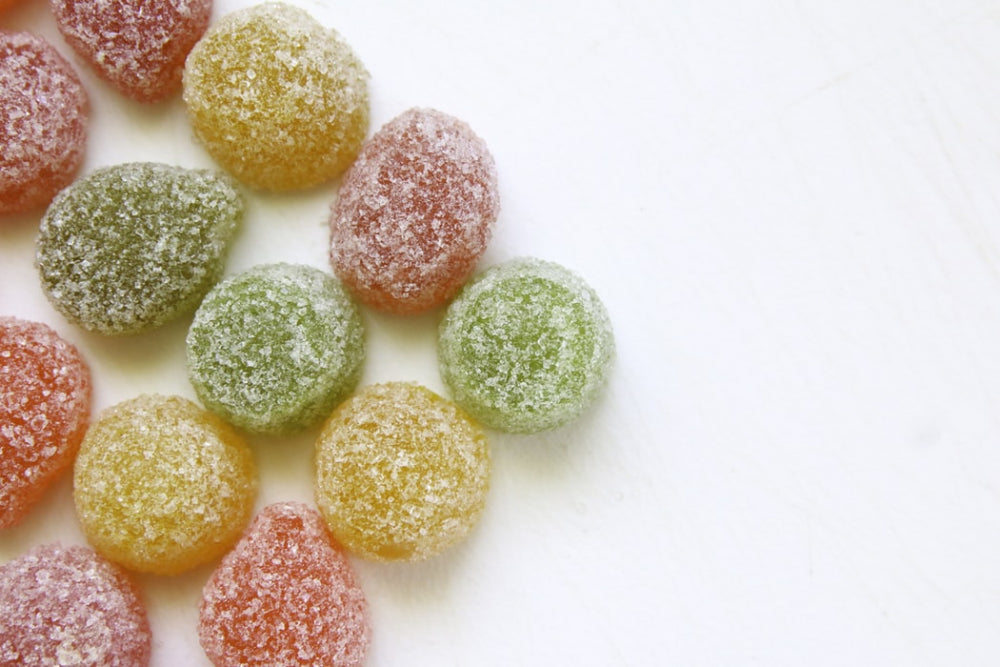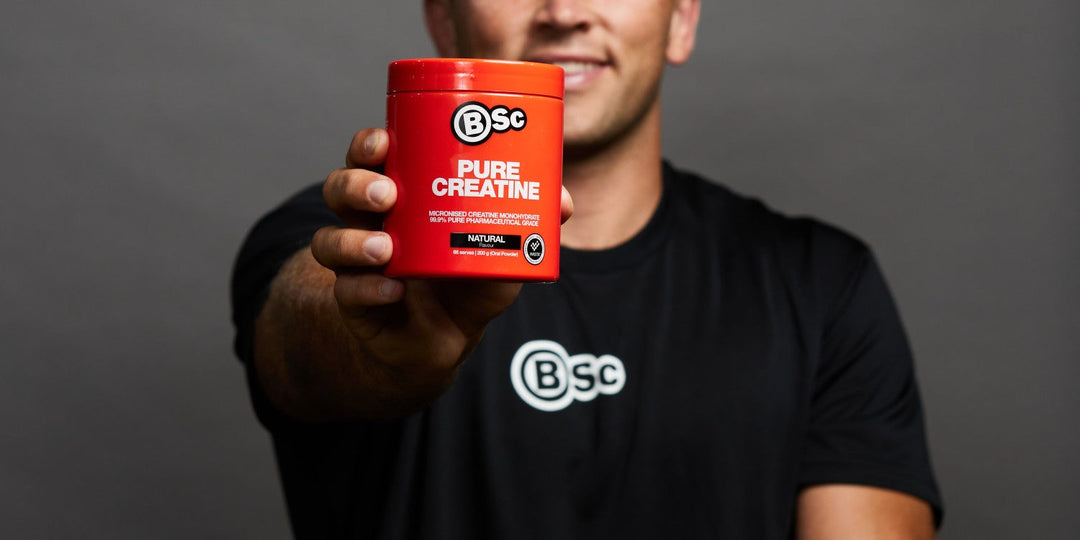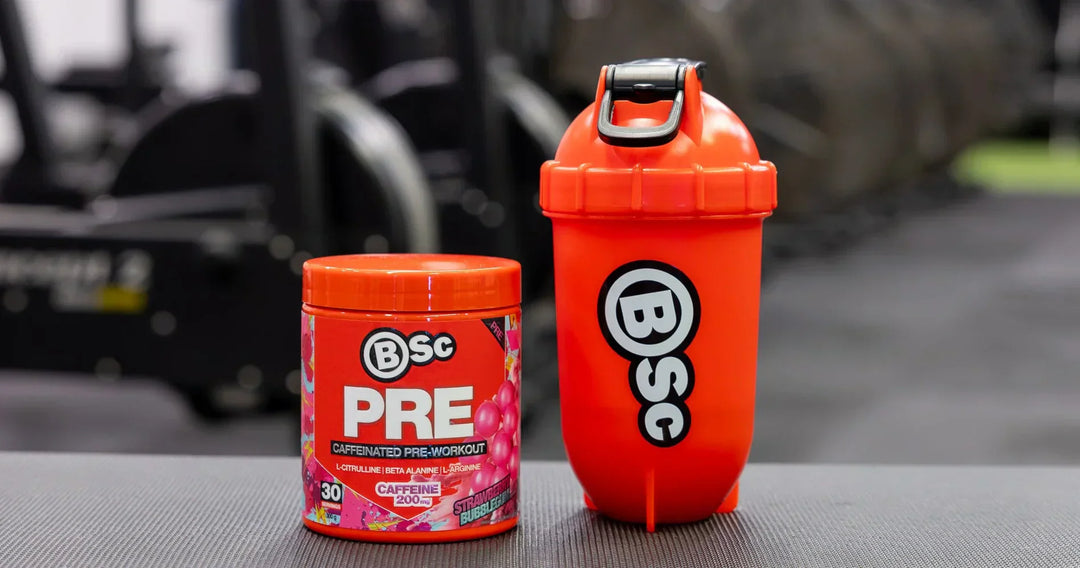The BSc Low Carb High Protein Bars are perfect for an on the go snack or as a naughty-but-not sweet treat in place of the 3 pm chocolate bar! But have you ever wondered how they can be so gosh darn delish, without a high sugar content? Well, the BSc bars are formulated using sugar alcohols. And before you panic, you won’t get done for DUI OR spike your blood glucose after one of these scrumptious bars. Let me explain!
What are sugar alcohols?
As confusing as the name may be, sugar alcohols are neither sugar nor alcohol. Technically speaking, they are classed as a carbohydrate, with their chemical structure partially that of a sugar molecule and partially that of an alcohol molecule, but they do not contain the ethanol that alcohol does and do not get digested in the same way as sugars and starches. They actually behave more like fibre when ingested. This is because when they are consumed, just as with fibre, they are not completely absorbed or metabolised in the gut, and in general yield about half the calories of sugar. And because they are processed and absorbed at a much slower rate, their impact on blood sugar levels is less than regular sugar, making them useful in products for diabetics and people looking to reduce their energy intake. Sugar alcohols are present naturally in many plants like fruits and vegetables but can also be produced form commercial purposes from various foods such as corn, cereals, potatoes. What makes sugar alcohols attractive as a sugar replacement is that they are generally slightly less sweet than sugar, contain fewer calories and have less impact on insulin response. There are several types of sugar alcohols which have similar properties, but each differs in their sweetness, caloric value, insulin response and cooking qualities.
How are they produced?
Technically speaking, sugar alcohols are hydrogenated monosaccharides, disaccharides and oligosaccharides which can occur naturally in plants or can be manufactured by hydrogenating sugars. Hydrogenation is a chemical reaction which can occur naturally and in the lab, which changes the chemical structure of a molecule.
Are they safe?
Sugar alcohols are deemed safe for human consumption in Australia and across the world, and they have been added to foods since the 1920s. It should be noted that where sugar alcohols are consumed in serves greater than 50g a laxative effect can be experienced, which is why the statement ‘may cause laxative effect’ is required on products containing substantial serves of sugar alcohols. The laxative effect is caused due to the fermentation process that sugar alcohols undergo in the large intestine. Also, if you follow a low FODMAP diet, the ‘P’ stands for Polyols, which is another name for sugar alcohols and maybe a trigger of IBS symptoms for people who are sensitive to them.
Do they raise blood sugar?
Compared to sugars and other carbohydrates, sugar alcohols have less of an effect on blood sugar levels, which is why they are commonly found in food substitutes designed for diabetics. Glycaemic Index (GI) is the measure of how foods increase our blood glucose levels upon eating them. Carbohydrate-rich foods are tested for the impact of blood glucose and get a number between 1-100 which indicates their GI, one being almost no blood sugar spike and 100 is a large spike (white sugar is the reference food for GI with an index of 100). The specific GI of different sugar alcohols can be seen in the table below.
Relative sweetness and glycaemic index of sugar alcohols

How do you read labels of foods containing sugar alcohols?
Food labels must list any sweeteners that are in the product. By the definition provided by the Food Standards Australia and New Zealand, (FSANZ), sugar is any monosaccharides or disaccharides (glucose, fructose, galactose, sucrose, lactose, maltose etc.). Sugar alcohols by these FSANZ standards are not defined as sugars, due to their incomplete digestion, absorption and low impact of blood sugar levels. According to these food labelling standards, the claim ‘no added sugar’ can be made for products that use sugar alcohols but no mono/disaccharides to sweeten. Sugar alcohol content must be in the ingredients list and listed separately, along with fibre, on the nutrition information panel.
So if I use macro’s, how do I count sugar alcohols?
In Australia, the total carbohydrates, fibre content and sugar alcohols are outlined separately, if the sugar alcohols are in an amount that is significant. Because sugar alcohols are slightly less ‘impactful’ that sugars, in some country’s manufacturers can simply subtract fibre and sugar alcohols from the total carb content and only display ‘net carbohydrates’ on the label, which can be misleading. Therefore sometimes when you try to calculate out the calories of a product just using the displayed macros, you can end up with a number that does not match the calories displayed. Depending on the type of sugar alcohol, there will be a different calorie value and glycaemic index. For example, erythritol has no measurable impact of blood sugar levels, whereas maltitol has a GI of approximately 35. The table below outlines the kilojoule content of each sugar alcohol.
The energy content of sugar alcohols:

Source: Food Standards Australia and New Zealand ‘Nutrition Information Requirements’
By knowing how many calories per gram each macronutrient contains, you can calculate out the calorie content of food using the grams on the nutrition panel. Protein contains 4 calories per gram, carbohydrates contain 4 calories per gram, fat contains 9 calories per gram and fibre contains roughly 2 calories per gram. The energy from fibre comes from the short-chain fatty acids that are produced when the fibre is fermented in the gut- cool huh?!
Using the BSc Low Carb bar, we can calculate the energy of the bar, using the information displayed on the label below:

Protein: 19.5g x 4 calories per gram = 78 calories Total fat: 6.1g x 9 calories per gram = 54 calories Carbohydrates: 2.7g x 4 calories per gram = 11 calories Total fibre: 6.2 x 2 calories /gram = 12 calories Sorbitol: 3.3g x 3 calories per gram = 9 calories Maltitol: 8.7g x 3 calories per gram = 26 calories Glycerol: 3.7g x 4 calories per gram = 16 calories Total: 206 calories
So while there is a carbohydrate content, the bars contain no added sugar and have a much lower impact on your blood glucose than if there were sugars used to sweeten, plus that are backed with filling and muscle-building protein. So you can get the sweet fix, minus the crash- yaaaas!
If you are following a keto diet, do sugar alcohols count?
A ketogenic diet is characterised by a diet which sees approximately 80% of daily calories being derived from fats. In order to reach a state of nutritional ketosis, daily carbohydrate needs to be restricted. Generally, people will need to consume less than 50g of carbohydrates per day in order to reach ketosis, however, this can vary person to person. Protein can also be converted to glucose via gluconeogenesis so where dietary protein is higher than minimum requirements, there is the possibility that ketosis may be impaired from excess protein intake when following a ketogenic diet. The sugar alcohol erythritol as virtually no calorie content and accordingly, does not impact blood glucose levels, making it useful for the keto folks, however, other sugar alcohols may produce a glycaemic response dependent on the serving size. But remember, sugar alcohols have a much-reduced impact of blood glucose when compared to sugars.
Depending on your total daily intake of protein and carbs, the BSc protein bars could theoretically be included as a part of a ketogenic diet. The High Protein Low Carb bars may be useful for reducing cravings for more heavily sweetened foods, especially for more active people who, due to higher energy outputs, may have a relatively higher carb/protein budget while following a ketogenic diet.
BSc High Protein Low Carb Bars
The BSc High Protein Low Carb bars should be on your list of ‘go-to’ snack options when a sweet tooth strikes! The bars contain about 20g of protein per bar depending on the flavour, which is from a whey protein blend. These bars are a stellar choice if you are looking to cut back on the sweets and lose a few kilos, providing a chocolate-like hit without the sugar crash. Not only are they low in sugar, but the high protein content also makes them super filling and useful for hitting your protein requirements when trying to build muscle, win-win. And if you get bored easily, stress less because the BSc High Protein Low Carb bars come in 7 incredible flavours so you will never get bored!




